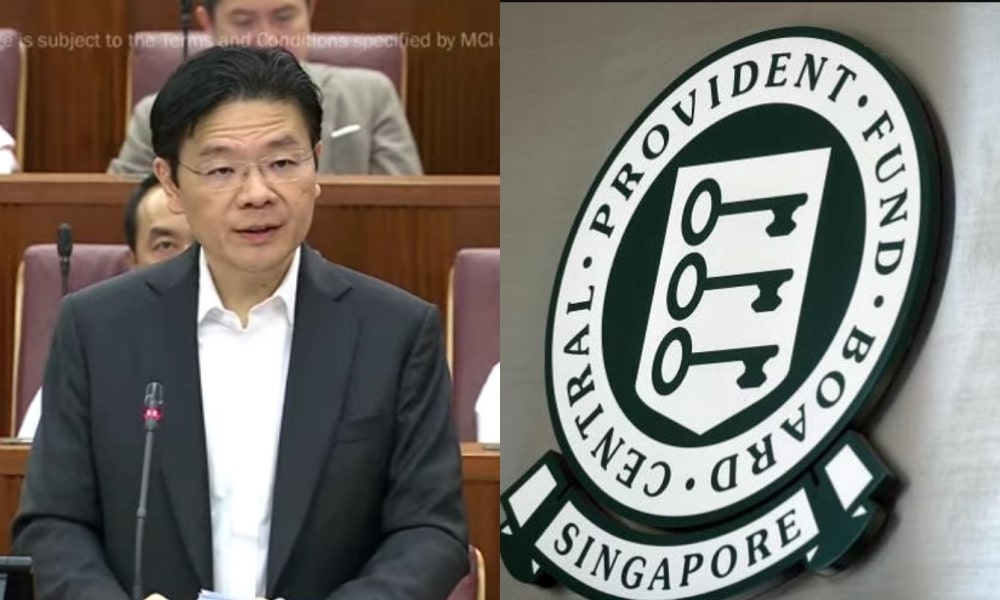by Leong Sze Hian
In his budget announcement on February 16, Deputy Prime Minister Lawrence Wong outlined significant changes to the Central Provident Fund (CPF), poised to reshape the retirement savings landscape for Singaporeans.
Among these changes, a pivotal modification stands out: the discontinuation of the Special Account (SA) for individuals aged 55 and above, set to take effect next year.
This adjustment aims to streamline retirement savings into fewer accounts, specifically the Retirement Account (RA), and to address the redundancy of the SA for those who have reached the age of eligibility for RA creation.
Under the new scheme, funds in the SA will be transferred to the RA to meet the full retirement sum, with any surplus funds redirected to the Ordinary Account (OA), which yields a lower interest rate.
This strategic move by the government will significantly impact how CPF members manage their retirement funds, particularly in terms of interest earnings.
Historically, CPF members employed a “shielding” strategy to maximize their savings’ interest income. By transferring funds to their SA, members benefited from a higher annual interest rate of 4.08%, compared to the OA’s 2.5%.
However, the upcoming changes will render this strategy ineffective for those above 55, as their ability to keep funds in the higher interest-earning SA will be eliminated.
Upon reaching 55, a CPF member’s RA is automatically created, and funds from the SA are the first to be transferred to this account, followed by OA savings if necessary to reach the Full Retirement Sum (FRS), or the Basic Retirement Sum (BRS)
The CPF Board has indicated that over 99% of CPF members above 55—around 1.4 million—can transfer all their SA savings to their RA, suggesting that the SA’s existence beyond this age has become largely redundant.
This reform aims to simplify the CPF system and ensure that retirement savings are efficiently consolidated into accounts that provide stable, long-term growth.
However, it may be good to understand the likely possible implications of the change.
Critically, the cessation of the SA for individuals over 55 could inadvertently result in some CPF members, accruing interest at the OA’s lower rate of 2.5%, if they do not opt to transfer their OA funds to their RA after the SA closure.
Firstly, we may need to note that most members would have met their BRS through their RA, leaving little to no balance in their SA.
This scenario primarily affects those whose retirement planning strategies did not involve actively managing the transfers between their accounts to optimize interest earnings.
It can be well expected that many senior CPF members passively manage their CPF accounts, believing that the CPF system works best in their interest. Consequently, the shift of SA funds to the OA could result in lower interest income for a portion of CPF members, should they decide against transferring their OA funds to their RA following the SA’s closure.
As for those who manage their CPF account, such as those who practice the “shielding” strategy and have met the BRS, they may in a sense, be denied of a long-term, high-interest, low-risk investment option and may opt to withdraw the sum to be invested elsewhere (instead of 2.5% in OA), to avoid transferring their money to the RA.
It is not “the same” to say that after your SA is closed and transferred to your OA – you can always transfer it to your RA, to still get the higher 4.08% interest of your closed SA. Because under the SA, you can withdraw all your funds at any time.

In contrast, under the RA, funds can only be withdrawn as a monthly annuity through CPF Life or the old CPF Minimum Sum Scheme.
Additionally, if you select the CPF Life Standard Default Plan, all accumulated interest from age 65 will be absorbed into the CPF Life pool upon death.
Consequently, most CPF members who wish to leave their accumulated interest to their nominees might opt for the Basic plan, which offers a lower monthly payout, instead of the default Standard plan.
For instance, the accumulated interest lost upon death at age 80, with a Full Retirement Sum (FRS) of S$192,000 (in 2022), could be about S$160,000 (accumulated interest from 65 to 80). For those deferring their payouts to age 70 under the Standard Plan, the relative loss of accumulated interest upon death may be even higher.
And also, for those who opt for the ERS which has just been increased to up to 4 times of the BRS in the Budget – similarly, the accumulated interest lost may be even higher.
Another possible implication of the change may be that there are 249,000 CPF members who have invested $5.8 billion (invested sum – not the current value) from their SA, as of 4Q2023. So, for those who liquidate after age 55, does it mean that the proceeds may be returned to the OA (2.5%), instead of the SA (4.08%) previously?
The removal of the SA after 55 may lead to less interest to those who choose not to have their money transferred to RA from their OA, after their SA closure. For those who choose to transfer to RA – they may arguably, lose the flexibility of withdrawal under the SA after 55, if they have met the BRS.

